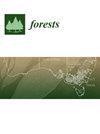Rethinking Productivity Evaluation in Precision Forestry through Dominant Height and Site Index Measurements Using Aerial Laser Scanning LiDAR Data
IF 2.4
2区 农林科学
Q1 FORESTRY
引用次数: 0
Abstract
Optimizing forest plantation management has become imperative due to increasing forest product demand, higher fertilization and management costs, declining land availability, increased competition for land use, and the growing demands for carbon sequestration. Precision forestry refers to the ability to use data acquired with technology to support the forest management decision-making process. LiDAR can be used to assess forest metrics such as tree height, topographical position, soil surface attributes, and their combined effects on individual tree growth. LiDAR opens the door to precision silviculture applied at the tree level and can inform precise treatments such as fertilization, thinning, and herbicide application for individual trees. This study uses ALS LiDAR and other ancillary data to assess the effect of scale (i.e., stand, soil type, and microtopography) on dominant height and site index measures within loblolly pine plantations across the southeastern United States. This study shows differences in dominant height and site index across soil types, with even greater differences observed when the interactions of microtopography were considered. These results highlight how precision forestry may provide a unique opportunity for assessing soil and microtopographic information to optimize resource allocation and forest management at an individual tree scale in a scarce higher-priced fertilizer scenario.利用航空激光扫描激光雷达数据测量优势树高和林地指数,重新思考精准林业的生产力评估
由于林产品需求不断增加、施肥和管理成本上升、土地可用性下降、土地使用竞争加剧以及对碳封存的需求日益增长,优化人工林管理已成为当务之急。精准林业是指利用技术获取的数据支持森林管理决策过程的能力。激光雷达可用于评估森林指标,如树高、地形位置、土壤表面属性及其对单棵树木生长的综合影响。激光雷达为在树木层面应用精确造林打开了大门,并可为施肥、间伐和施用除草剂等针对单棵树木的精确处理提供信息。本研究使用 ALS 激光雷达和其他辅助数据来评估规模(即林分、土壤类型和微地形)对美国东南部龙柏种植园内优势高度和地点指数测量的影响。这项研究表明,不同土壤类型的优势高度和地点指数存在差异,当考虑到微地形的交互作用时,观察到的差异甚至更大。这些结果突显了精准林业如何为评估土壤和微地形信息提供了一个独特的机会,从而在肥料稀缺、价格较高的情况下优化单棵树规模的资源分配和森林管理。
本文章由计算机程序翻译,如有差异,请以英文原文为准。
求助全文
约1分钟内获得全文
求助全文
来源期刊

Forests
FORESTRY-
CiteScore
4.40
自引率
17.20%
发文量
1823
审稿时长
19.02 days
期刊介绍:
Forests (ISSN 1999-4907) is an international and cross-disciplinary scholarly journal of forestry and forest ecology. It publishes research papers, short communications and review papers. There is no restriction on the length of the papers. Our aim is to encourage scientists to publish their experimental and theoretical research in as much detail as possible. Full experimental and/or methodical details must be provided for research articles.
 求助内容:
求助内容: 应助结果提醒方式:
应助结果提醒方式:


